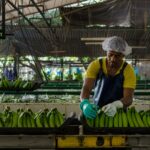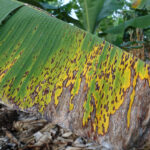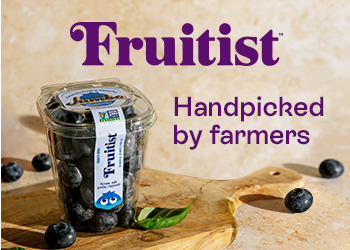UN: Black Sigatoka threatens survival of Caribbean bananas

Banana and plantain growers in the Caribbean remain extremely vulnerable to Black Sigatoka, a disease that has already devastated production in many parts of the region.
The Food and Agriculture Organization of the United Nations (FAO) warned of the damage that the disease could inflict to food security if it does not receive adequate attention. Bananas are considered the world's fourth most important staple food, after rice, wheat and maize.
An estimated 107 million metric tons (MT) of bananas and 37 million MT of plantains are produced globally a year.
"Black Sigatoka disease is considered one of the most dangerous diseases of banana and plantain. It spread from Asia and reached the Caribbean in 1991. Smallholder banana farmers were unable to shoulder the expense of fighting the disease on their own, and banana farms have been decimated," FAO said.
Control of the disease in the Caribbean has been restricted due to constraints in funding for research, development and control inputs for farmers, such as fungicides.
Of the five countries targeted by FAO efforts - Dominica, Grenada, St. Lucia, St. Vincent and the Grenadines, and Guyana - total banana exports had dropped to 25,000 MT by 2011. This is contrasted by 80,000 MT in exports by St. Vincent and the Grenadines alone in 1990.
Grenada now has no banana exports, down from 8,400 MT shipped in 1990. Guyana had also lost all of its plantain exports until FAO intervened.
"The Caribbean island countries meanwhile saw similar declines of 90 to 100 percent of their banana and plantain exports, and trade practically ground to a halt," FAO said.
Black Sigatoka does particularly well in hot and humid climates, making it a devastating fit for many Caribbean production areas.
"The disease first appears as narrow streaks and black spots, which as they proliferate can eventually blacken entire leaves of bananas and plantains, blocking photosynthesis. Banana bunches are smaller, as are the fruit, and due to premature ripening that can occur even while the fruit is still on the tree, the bananas are no longer suitable for export," FAO explained.
The disease's spread has been encouraged by informal trade and the inability of producers to keep up with control measures.
"Even before Black Sigatoka, however, many smallholder farmers were already struggling to cope after repeated natural disasters, from hurricanes to floods and droughts, as well as a loss of traditional export markets," FAO said.
"The spread of Black Sigatoka contributed to many of these farmers abandoning their banana fields as they simply don’t have the resources for costly fungicide treatments that have helped keep other major banana exporters in business."
The dominant banana sub-group for export, Cavendish, performs well in long-distance travel but is extremely susceptible to Black Sigatoka.
In response, Cuba and Jamaica have largely abandoned Cavendish banana production and turned to resistant banana and plantain cultivars for internal consumption.
In the Domincan Republic, growers have developed organic banana production using modern crop management techniques that reduce the need for fungicides.
Under FAO-recommended strategies, Guyana is expected to recover its banana exports in two to three years.
If Caribbean nations are to maintain banana exports, FAO emphasized the importance of developing new, more restistant cultivars.
"There could be reprieve worldwide if scientists were finally able to breed bananas that are similar to the Cavendish in texture, taste and durability, but which possess genetic resistance to this banana disease," FAO said.
Related stories: Opinion: the Caribbean’s challenge to control Black Sigatoka
Black Sigatoka fungus hits Dominican Republic’s bananas
Photo: www.shutterstock.com











































